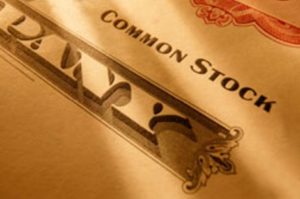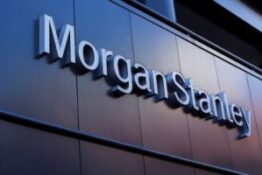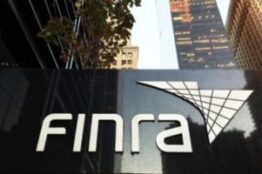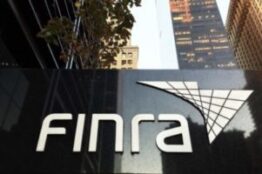

By: Dana N. Pescosolido
Once again, the author analyzes FINRA customer arbitration awards in his unique way, and draws comparisons between 2015 and 2016. Bottom line, customers won “something” a little less often in 2016, but won a little more money when they did. Read on for a detailed analysis.
FINRA’s published statistics are accurate as far as they go, but they understate Claimants’ Success Rates in cases that go to hearing on the merits and where Claimant is represented by Counsel.
If one were to look at FINRA Dispute Resolution’s statistics page, one would get the impression that 2016 was a bad year for Claimants at FINRA. For the full year of 2016, FINRA reports that Claimants in cases decided by “All-Public” panels received monetary awards only 43% of the time (down from 47% in 2015), and in cases heard by “Majority-Public” panels, only 36% of the time (down from 45% in 2015). FINRA’s aggregate statistics may be accurate as far as they go, but they do not reflect the “fair average” case being litigated by attorneys who try these cases.
When we analyzed the results for the kind of cases that most attorneys handle –cases which actually get heard on the merits and where the Claimant is represented by counsel – the statistics are substantially more favorable to the Claimants. We have eliminated cases dismissed under Rule 12206 (the six-year eligibility rule) or other procedural rules, cases where the claimant is an institution rather than a retail customer, cases where one side or the other fails to participate in the arbitration, and cases where the Claimant appears pro-se. Having done so, our “stats” diverge significantly from those published by FINRA. After all, if you are trying to negotiate a settlement in a customer case, you are negotiating with an attorney who is presumptively competent and will be able to get his or her case to a hearing on the merits, right? So let’s just focus on those cases.
All-Public panels vs. Majority Public panels.
In those cases, where the case was decided on the merits following a hearing and where the retail Claimant was represented by counsel, Claimants before All-Public panels in 2016 won monetary awards 50% of the time (55 out of 111 cases). Claimants who tried their cases to Majority-Public panels won an award 55% of the time (26 out of 47 cases). For Majority-Public panels, that percentage is exactly the same as in 2015. For All-Public panels, the 50% “win rate” represents a drop of 5% from 2015, when it was 55%. Combined, three-member panels awarded the Claimant some amount of money in 81 out of 158 cases – an overall (blended) win rate of 51.3%. What is interesting here is that, despite Claimants’ aversion to Majority-Public panels, those panels over the last two years actually granted Claimants money slightly more often than did All-Public panels, although as seen below, they were slightly more stingy in the amounts awarded.
But the raw percentages also have to be viewed in light of how much Claimants “won” when they did receive a monetary award, and these figures actually show modest improvement for Claimants. The average award as a percentage of compensatory damages requested for All-Public panels in 2016 was 51% of the amount requested (vs. 50% in 2015), and for Majority-Public panels was 48% (up from 42% in 2015). Moreover, the percentage of cases where Claimants were awarded 50% or more of the compensatory damages they were seeking also improved for Claimants. All-Public panels awarded 50% or more of the compensatory damages requested 49% of the time (up from 45% in 2015), and Majority-Public panels gave awards of 50% or more 42% of the time that they granted damages (up from 35% in 2015).
We also examined whether the percentages were significantly different in cases where the Award detailed an amount demanded at the close of the hearing vs. where the Award only recited what was claimed in the Statement of Claim, on the theory that amounts demanded at the close of the hearing might be more “realistic” since the evidence of damages was fully developed and perhaps expert testimony had clarified the claim. The average percentage recoveries were very close, and any differences were not statistically significant. Perhaps this is partly because of FINRA’s sliding fee structure, which slightly discourages claims for unrealistic damages by charging higher filing fees as claims go up.
Full recovery continued to be elusive for Claimants – they recovered 100% of the compensatory damages requested only about 10% of the time – in 16 of the 158 cases decided by three-member panels where the Claimant was represented by counsel. This result was similar to 2015, when only 16 out of 184 cases saw the Claimant receive 100% of what he or she was requesting. As in 2015, awards for “zero” outnumbered “100%” awards by about five to one.
Thus, despite the initial appearance of a “bad” year, Claimants overall fared about the same as they did in 2015 – winning some amount a little more than half the time (overall 51.3% vs 55% in 2015), and winning more money when they did win than in 2015 – both in terms of average awards and in the frequency of awards that awarded at least half of the compensatory damages requested. The average award (as a percentage of the compensatory damage request) from All-Public panels was up 2% in 2016 (51% vs. 50%) and the average award in Majority-Public cases was up 14% (48% vs. 42%). Again – these statistics are for cases that were heard on the merits and where Claimant was represented by counsel.
Pro-se Claimants continued to perform badly.
As usual, FINRA’s published statistics are dragged down significantly by pro-se Claimants. Last year, we reported that in cases that went to hearing (either before a three-member panel or a sole public arbitrator) pro-se Claimants won something in just 2 of 28 cases. The year 2016 saw similar results – pro se Claimants won just 2 of 21 cases that went to hearing. Combining these numbers for 2015 and 2016, only 4 of 49 pro-se Claimants won anything when they took their cases to hearing. That’s a terrible 8% success rate vs. a success rate of about 52% (for both years combined) when represented by counsel. And while they fared somewhat better in cases that were decided “on the papers”, they still fared substantially worse than Claimants who were represented by counsel. In cases decided on the papers, pro-se Claimants won only 14 out of 58 cases in 2016 (or 24% of the time), which lines up with how they did in 2015, winning only 20 of 76 cases (a 26% win rate). Claimants who were represented by counsel in cases decided on the papers won 40% of the time in 2016 – a much better win rate than the 24% suffered by pro-se Claimants. And pro-se Claimants who did “win” cases decided on the papers recovered only 48% of what they asked for, whereas Claimants who were represented by counsel in cases decided on the papers recovered on average 76% of what they were requesting (and received 100% recovery in 10 of 21 such cases – the highest recovery rate of any type of case and the highest percentage of full recoveries.)
“Win Rates” declined with each lower echelon of “attention”, and Polarization rates increased. Just like last year.
The same dynamic that was noted last year regarding declining success rates and increased polarization as cases got less “attention” continued in 2016. For cases decided by three-member panels where the Claimant was represented by counsel, Claimants won something 51.3% of the time. For cases decided by a sole public arbitrator following a hearing on the merits, where Claimant was represented by counsel, Claimants won something 43% of the time (vs. 45% in 2015), and as stated above, Claimants represented by counsel won 40% of the time in cases decided on the papers (vs. 35% in 2015). Thus, the likelihood of an award in favor of the Claimant diminishes as the process gets less formal. Yet, even though success rates declined, average compensatory recovery rates in cases decided by sole public arbitrators where the Claimant was represented by counsel were substantially higher than with three-member panels – 63% for cases decided by a single arbitrator after a hearing, and a whopping 76% average recovery rate when the case was decided on the papers (and the Claimant was represented by counsel). So even though sole public arbitrators granted awards to Claimants less frequently, when they did, they awarded substantially more in compensatory damages (as a percentage of recovery sought) than did three-member panels. This is somewhat offset, however, by a lower frequency of “sweetener” awards by sole public arbitrators, as detailed below.
Just as in 2015, polarization (the percentage of awards that are either for “zero” or 100%) increased as cases got less attention. “All or nothing” awards occurred 60% of the time with three-member panels, 71% of the time in cases decided by sole public arbitrators following a hearing on the merits, and 79% of the time in cases decided on the papers. These polarization figures are almost identical to those observed in 2015. Viewed another way, 40% of awards by three-member panels were not for zero or 100%, but only 21% of awards “on the papers” were for something other than zero or 100%. If you are considering filing a case, to the extent that FINRA’s rules allow flexibility, you should give consideration to these statistics, because your client is most likely to get an award from a three-member panel, although it is likely to be for less money as a percentage of what you claim than if you won the case before a sole public arbitrator. If you file a case to be decided on the papers, you are significantly more likely to get an all-or-nothing award. So consider how strong your case is in deciding how to file.
Sweeteners (awards for attorneys’ fees, punitive damages, non-forum costs and pre-award interest) added significantly to the Total Recovery Rate.
In 2015, we observed that, in addition to compensatory damages, three-member panels granted one or more “sweeteners” (attorneys’ fees, punitive damages, non-forum costs or pre-award interest) in about half of the cases, and this trend continued in 2016. In 2016, three-member panels awarded one or more “sweetener” in 42 of the 81 cases in which they awarded compensatory damages. That’s 52% of the cases in which they awarded compensatory damages. Attorneys’ fees were awarded in 21 of the 81 cases, punitive damages were awarded in 7 of the 81 cases, non-forum costs (usually expert witness fees) were awarded in 28 of the 81 cases, and pre-award interest was awarded in 19 of the 81 cases. In 21 of the 42 cases where sweeteners were awarded, the panels awarded at least two sweeteners. Overall, attorneys’ fee awards added 20% to the compensatory awards in the 21 cases where they were granted, and punitive damages added 55% overall to the compensatory award in the seven cases where they were granted. Not surprisingly, in cases where punitive damages were awarded, the compensatory awards were relatively high as a percentage of the compensatory demand (73% vs. the overall average of about 50%).
Non-forum cost awards averaged $25,000 where they were granted, although the range was quite wide – from as low as $2500 to a high of $1.5 million (which was excluded from the calculation of the average as an outlier –the next highest non-forum cost award was $163,000). The amount of interest awards varied widely depending upon the interest rate applied and the number of years that it covered. One award of interest was for $2.5 million, but in that case, the compensatory award was $12.7 million, and the attorneys’ fee award was for $3.1 million. Big numbers beget big numbers.
For the full universe of 81 cases decided by three-member panels where monetary awards were granted, the impact of sweeteners was significantly less, as no sweeteners were awarded in 39 of the 81 cases, and only one (relatively small case) had an award that awarded all four sweeteners. Overall, awards of attorneys’ fees added about 9.3 % to the aggregate amount of compensatory damages awarded in 80 of the 81 cases[1], while punitive damages added 5.1%, non-forum costs added 2.8% and pre-award interest added 3.8%. Collectively, sweeteners increased the Total Recovery Rate from 50% to 60.5 %, slightly higher than the 59% Total Recovery Rate for 2015.
Sole public arbitrators granted “sweeteners” less often than did full panels – about 37% of the time, and it was almost always in the form of pre-award interest, with a couple of attorney fee awards thrown in, so the amounts that sweeteners added to awards issued by sole public arbitrators was much less than was added by full panels. Where the Claimant was represented by counsel sweeteners added just 4.7% to aggregate compensatory damages where a hearing was held, and just 5% in cases decided on the papers. Thus, the Total Recovery Rate for cases decided by sole public arbitrators and where Claimant was represented by counsel was 66% for cases decided after a hearing, and 79% for cases decided on the papers. Those percentages still compare favorably to the 60.5% Total Recovery Rate for cases decided by full panels, but, remember – these statistics only apply to the cases where Claimants actually “won” compensatory damages – and the “win rate”, even where Claimant was represented by Counsel, was only 43% in cases decided by sole public arbitrators after a hearing, and 40% in cases decided on the papers.
If one were to multiply the win rate for each category of cases where Claimant was represented by counsel by the Total Recovery Rate for each category, one would find that the product of that multiplication would result in “actuarial” values that are quite close, meaning that the higher total recovery rates for cases decided by sole public arbitrators are completely offset by the lower win rates in those cases. The resulting overall “actuarial” values are 31% for full panel cases, 28% for cases decided by a sole public arbitrator after a hearing, and 31.6% for cases decided on the papers. Put another way, if an attorney took on a portfolio of 100 new cases (allowing the law of averages to kick in), it wouldn’t really matter from a total recovery standpoint how he or she filed those cases. In the end, the attorney would recover about 30% of the aggregate value of the 100 cases. So, for an attorney considering taking a new case and deciding how to file, think about what’s more important to your client – the likelihood of winning at least something (in which case you’d opt for a full panel), or taking a higher risk of maybe winning more (in which case, depending on the amount of the claim, you might opt for a sole public arbitrator).
Although there were no huge “runaway” awards, there were a number of cases in the six and seven-figures where the Total Recovery was well over 100%. There were at least 5 cases where Total recoveries exceeded 200% — ranging from 218% to 442%. One must at least respect the possibility that the case you are negotiating – if it goes badly at the hearing and punitive damages are in play – could result in an award that exceeds compensatory damages.
Putting it all together.
So where does all this leave us in our negotiations of these customer cases? Well, now that we have two years of solid data, we can be more certain about the probabilities of various outcomes. We know that when Claimants are represented by counsel and take their case to a hearing, they win a little more than 50% of the time. And when they do win, they win on average about 50% of what they are demanding in compensatory damages, and Total Recovery Rates exceed 60%. In addition, when they do win, they get at least one sweetener about half the time, and in half of those cases, they get more than one sweetener. Punitive damages are rarely granted, but if they are granted, they significantly increase the size of the award. For the whole universe of awards given by three-member panels, sweeteners added about 21% on average in cases where compensatory damages are awarded.
Does this mean that every case should settle for 50% (the win rate) of 50% (the average compensatory award) plus a 10% kicker for sweeteners? No. Every case is different. Maybe you have a good argument for dismissal under Rule 12206 (there were 44 awards issued in 2016 that dismissed the case under Rule 12206). And certain awards (such as attorneys’ fees) are supposed to have a statutory or contractual basis behind them, although several attorneys’ fee awards were based on the “mutual request” doctrine, so be careful what you ask for. The cost of going forward is also something to consider. And the merits of the case and the quality of your witnesses are probably the most important factors in determining the value of the case.
If you are attempting to settle a case, whether directly with opposing counsel or in a mediation, keep the statistics and themes set forth in this article in mind. Clients often have unrealistic expectations that need to be tempered by reality, and the statistics in this article can help temper them. For example, if a Claimant is certain of victory and refusing to take less than 100% of the compensatory claim, then you know that the case can’t settle. But if you explain that every Claimant thinks they are going to win something, yet only half do, and that 90% of the time they don’t get everything they are asking for, then maybe you can get your client to listen to reason. The same goes for the Respondent’s side. The corporate representative may be very bullish on the case, but knowing that firms lose something half the time, and that when they do, total recoveries average around 60% of the compensatory claim, maybe that will loosen the purse strings. Better to settle than lose.
2016 Customer Cases at FINRA where Claimant had Counsel and Pro-se Cases
| All-Public Panels (w/counsel) | Majority-Public Panels (w/counsel) | All Three-member Panels Combined (w/counsel) | Sole Arbitrator After Hearing w/counsel | Sole Arbitrator -On the Papers w/counsel | Pro-Se Claimants – All cases combined | |
| “Win Rate” | 50% | 55% | 51.3% | 43% | 40% | 20% |
| Average Award as % of Compensatory Claim | 51% | 48% | 50% | 63% | 76% | 50% |
| % of cases where Claimant Awarded more than 50% of claim | 49% | 42% | 47% | 50% | 76% | 44% |
| Total Recovery Rate | 57% | 72% | 60.5% | 71% | 79% | 46% |
| Polarization Rate | N/A | N/A | 60% | 71% | 79% | 82% |
Post script on the methodology:
- Why do you exclude cases dismissed under Rule 12206 and other procedural rules? Because they weren’t decided on the merits. There were 44 awards issued in 2016 where the panel concluded that the case was not eligible for FINRA arbitration because more than 6 years had passed. They dismissed the case without prejudice. That’s not a ruling on the merits, and the Claimant was still allowed to pursue remedies in Court, although the statutes of limitations could bar the claim, but maybe there was a shot at equitable tolling in court that wasn’t available in arbitration.
- Why exclude cases where the Claimant is an institution? Because cases involving institutional claimants often involve different considerations (such as sophisticated consultants being involved), and because institutional claimants usually make lousy claimants. They get no sympathy from the panel, and they are more able to bear losses than individuals. Anyway, we only excluded five such cases in 2016 – and guess what? The institutional claimants lost all five.
- Why exclude cases where one side or the other fails to participate? Well, normally it’s a Respondent who fails to participate (we counted 25 of these cases), although we identified two cases in 2016 where the Claimant must have lost interest and abandoned the case. The party who fails to post almost always loses, but what else would you expect? So, if you were to include these cases (a net 23 “wins” for Claimants), in our view, you would be artificially inflating the win rate. Plus, the likelihood of actually recovering anything in these cases is poor, since absent Respondents are usually absent for a reason (like having gone out of business, or having left the industry). We were only looking for cases where there appeared to be a fair fight at the hearing.
- Why exclude cases where the Claimant was pro-se? We didn’t actually exclude them – we just counted them separately, because they did such a poor job of representing themselves that they would have skewed the win rate downward significantly. We thought it made sense to present the pro-se data, but to separate it and highlight the issue of under-represented Claimants. We found the statistic that for all of 2015 and 2016 only 4 out of 49 pro-se Claimants who went to hearing won anything to be pretty telling.
- How did you deal with cases where there was more than one Claimant? For purposes of calculating “win rates” we counted them as a single case. But if it was evident from the award that the claims were independent of each other, that the Claimants made separate claims for compensatory damages and that the panel treated them as independent (such as by awarding clearly different percentages of the requested compensatory damages) then, for purposes of calculating averages and the percent of claims exceeding half of what was requested, we treated them as separate “outcomes”. There were eight such cases, which added 24 “outcomes” to our universe of outcomes. In one case, for example, there were eight unrelated Claimants who each recovered different percentages of the amounts each claimed, ranging from 25% to 115% of the compensatory claims. This allowed us a broader, and therefore more statistically reliable database of percentage recoveries. We did not, however add 24 “wins” to the “win” count, since each case was one award by one panel presumably arising out of a common set of facts and circumstances. Moreover, in three of the eight cases, one of the Claimants got nothing, but we still counted the case as a “win” since at least one Claimant received a monetary award. If we had counted each outcome in multi-Claimant cases as a separate win or loss, it would have increased the overall “win rate” from 51.3% to 56%.
- How could the Total Recovery Rate for Pro-Se Claimants be lower than the Average Award as % of Compensatory Claim? Good question, as this highlights the difference between how the average award figure is calculated and how the Total Recovery Rate figure is calculated. The Average Award figure is calculated by adding up the percentage recoveries in each case in a category and dividing by the number of cases. Thus, each case counts the same as the other cases, regardless of the size of the case. For example, for cases decided by All-Public Panels, there were 55 “wins” and 9 additional “outcomes” due to multi-claimant cases. That adds up to 64 outcomes. Each outcome had a percentage recovery vs. the Compensatory Claim. We added up the 64 percentages and divided by 64 to come up with an “average” award as a percentage of the claim. The size of the case didn’t matter.
But in calculating the Total Recovery Rate, we added up all the Compensatory Claims in each category for the cases where awards were granted and added up all of the recoveries in that category (including sweeteners) for those same cases, and divided total recoveries by the aggregate amount of claims to come up with a Total Recovery Rate for each category. For this calculation, the size of the case did matter, as larger cases would have a greater influence on the Total Recovery Rate than smaller cases. You might have noticed that the Total Recovery Rate for Majority-Public Panels was 72%, much higher than the 57% for All-Public Panels. This is because the total of all awards for Majority-Public Panels was much smaller than for All-Public Panels (which made it more subject to skewing), and there was one large punitive damages award that drove the number to 72%. If you eliminate that one case entirely, the Total Recovery Rate for Majority-Public Panels would have been 59%. This is a problem inherent in dealing with small sample sizes, and why we published the figures for the Combined Three-Member Panels, as the larger sample size renders it less susceptible to distortion.
The bottom line – you can agree or disagree with our methodology, but it is what we felt best represented outcomes in the kinds of cases that most attorneys actually handle. It is consistent with last year’s methodology, so year-to-year comparisons are on an “apples-to- apples” basis.
Dana N. Pescosolido is a recently retired securities litigation attorney with 36 years of practice experience. He now makes himself available as a securities mediator for customer cases, recruiting and raiding cases, employment disputes and intra-industry matters. His website is www.PescoMediation.com, and he can be reached at dnp@PescoMediation.com. He welcomes comments on his articles and papers.
[1] This calculation is impacted by one very large case, the well-publicized case of the Estate of Roy Speer vs. Morgan Stanley (FINRA Case 13-00549). The compensatory award in that case was for $32.8 million, and over $1.5 million was awarded in non-forum costs. The panel also awarded attorneys’ fees, but left the amount to be determined by the courts. Given that the hearing lasted 142 sessions over 13 months, attorneys’ fees must have been extremely high. However, because we could not determine what the actual fees paid were (apparently they were part of a confidential settlement agreement) we excluded the Speer case from the calculation of the attorney fee figure.
Our practice is limited to the representation of investors. We accept representation on a contingent fee basis, meaning there is no cost to you unless we make a recovery for you. There is never any charge for a consultation or an evaluation of your claim. For more information, contact us at (877) SEC-ATTY.








